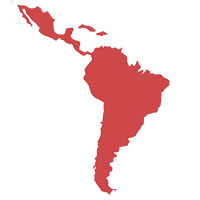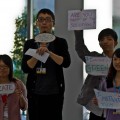Fight Fire with Fire: Article 6 and the Changing World
Malcolm J | December 2, 2014.
“Education is the most powerful weapon which you can use to change the world.” – Nelson Mandela
Negotiations have already kicked off in Lima, but there is one Article of the convention that isn’t garnering much attention.
Article 6, a two-part article that addresses the implementation of education and public awareness programmes on climate change, while important to adaptation, lacks the national and international support that is necessary for successful implementation. At COP8, the New Delhi Work Programme was adopted in recognition of the importance of the elements of Article 6. However 12 years later Article 6 is being undervalued.
Article 6 defines activities in six priority areas that are determined by the UNFCCC as essential for involving all levels of society in the climate change process. The outcomes that the parties are obligated to demonstrate and that should “promote and facilitate at the national and, as appropriate, sub-regional and regional, levels…” are: climate change–related educational programmes at primary and secondary levels; public awareness campaigns; public access to relevant information; public participation; the training of experts; and the enhancement of international cooperation.
Ask any educator what the value of their work is and they could answer broadly and comprehensively. Unfortunately, most countries neglect the importance of education in preparing future generations for problems of their futures. Recently, the International Institute for Applied Systems Analysis (IIASA) published an article in the journal Science with the title “Universal education is key to enhanced climate adaptation.” It is no mere coincidence that it was published three days before the start of this year’s climate change negotiations. The research found that in most cases an expansion of education could be a better investment in protecting people from the impacts of climate change than conventional investments such as dams, sea walls, and irrigation systems.
Erich Striessing, a co-author, said: “Investment in human capital not only empowers people to achieve desirable socioeconomic outcomes, but it also has a protective function against the diverse impacts climate change may have over the coming decades.” Improving education is particularly relevant to the most vulnerable groups when it comes to a changing climate; the indigenous.
It was recently announced that the Green Climate Fund has US$9.7 billion pledged per year for climate funding and adaptation to climate change, a mere fraction of the $100 billion target. Traditionally, projects have centred on large-scale infrastructure solutions, as well as on technology transfers. While neither focus is innately wrong, it is critically important to determine where the money would have the greatest impact. IIASA argues for investing in education.
In 2012, when the New Delhi Work Programme expired, the COP adopted decision 15/CP.18, Doha work programme on Article 6 of the Convention. This decision focusses on strengthening regional and sub-regional efforts, raising public awareness and fostering public participation in, and public access to information on, climate science and policy. This has started a series of dialogues on Article 6, with the second taking place at the Bonn Climate Change Conference in June of this year. In Lima, 23 countries have come together to ask for operative language to be included in the Paris 2015 deal in relation to education, training, public awareness, access to information and public participation.
While SBI41 will be invited to take note of the summary report on the 2nd Dialogue on Article 6 of the Convention at Lima, there are also a handful of side-events that will highlight education and its value in climate change adaptation and resilience building. Last year’s side-event highlighted current efforts to improve education, public awareness, and public participation with indigenous groups. Indigenous participation is substantial at COP 20, which bodes well for the implementation of Article 6.
While negotiations will occur over the proposed operative language over the next two weeks, there is still plenty that can be accomplished outside the COP. National governments do not have to wait for a new agreement to implement Article 6; some governments are already pushing forward by supporting climate change education both financially and politically. For example, the Peruvian government took college students on a virtual tour of the impacts climate change is having on the mountainous regions of the country, the main source of fresh water, to inspire the youth to take action at the COP. With more education and public education occurring all over the world, there may be no better weapon to adapt to our quickly changing planet.
Operative language proposed in the submission by the Dominican Republic, Argentina, Belize, Benin, Burkina Faso, Chile, Colombia, Costa Rica, Dominica, El Salvador, Fiji, Ghana, Guatemala, Haiti, Jamaica, Kenia, Malawi, Maldives, Marshall Islands, México, Palau, Panamá, Paraguay, Peru, Philippines, Saint Lucia, Samoa, Trinidad and Tobago, Uganda, and Uruguay:
1. Parties shall take appropriate measures to develop, adopt and implement policies, strategies, regulations and/or action plans on climate change education, training, public awareness, public participation and public access to information at the national, regional, sub-regional, sub-national, local levels and communities to enable transformative change towards low-emission and climate-resilient societies.
2. Parties shall cooperate on promoting the implementation of initiatives on climate change education, training, public awareness, public participation and public access to information through regional approaches, bilateral, multilateral, South-South and triangular cooperation.
3. Developed country Parties shall provide support, including adequate and predictable financial support channelled through the financial mechanism of the Convention and other financial mechanism to developing country Parties to advance the implementation of their policies, strategies, regulations and action plans on climate change education, training, public awareness, public participation and public access to information to enable effective adaptation and mitigation action by all Parties.













comment